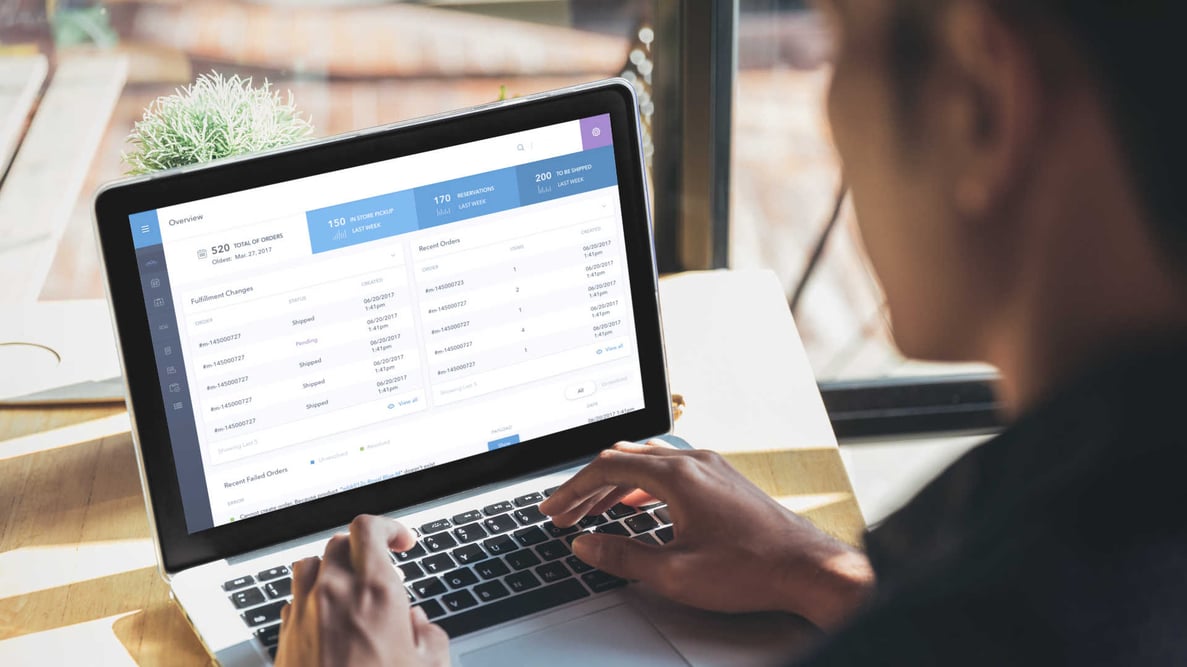In today’s competitive world, the demand to have a complete order management system is insanely high.
In the past, orders were received through fax, phone, or direct mail and had to go through various processes before order completion.
However, the growth of e-commerce and current technological advancements has necessitated the advent of systems that streamline the whole process, resulting in more order processing with minimal delays, and things like Amazon's free two day shipping.
One such system is the Order Management System (OMS) which allows easy and hassle-free order processing, backed up by a slew of other useful features.
Not every business needs an OMS - the purpose of this guide is to help you understand if your company would benefit from using an order management system.
What do Order Management Systems do?
Juggling between sales on your website, marketplaces, and even retail stores using different methods can be quite challenging. Besides the delay in task completion, you will always be prone to making some human errors.
The purpose of an order management system is to organize all orders you receive into clear and manageable tasks, and facilitate the fulfillment of those orders.
An OMS makes this straightforward by combining inventory and order data in a single location, and integrating with every other system that you use.
How does an OMS do all that?
- It can be linked to your inventory so that when an item goes out of stock, this information is reflected everywhere your products are sold. This minimizes instances where customers would be confused about a product’s availability.
- Your OMS system extracts information that will be used during the payment and shipping processes from the e-commerce website. This includes such things as their name, shipping address, and phone number.
- Through automated processes, the inventory is adjusted depending on the client's order, and the order marked as ready.
- Updates about the shipping status of the client’s order are enabled through OMS.
- It can also effectively handle returns and refunds.
How much does an OMS cost?
With the wide range of OMS options in the market today, there is no straightforward answer to this question.
A system with standard and easy to operate features could cost your business a few hundred dollars per month.
On the other hand, customized software such as those integrated with your system’s database or connected to 3rd party systems could go for as much as thousands of dollars per month.
As with many things, the devil is in the details. Be sure to understand why different vendors offer similar solutions at different prices.
Why use an OMS System?
An OMS is a great fit for businesses with offices in different locations or those selling using multiple channels (omnichannel).
With a high volume of orders frequently coming in from many channels, there would be a high error margin if traditional order processing methods are used.
Task automation and the centralization of warehouse and inventory data not only takes care of such errors but also reduces chances of data security and loss.
Unlike conventional systems that have to be accessed from your office, an OMS only requires an internet connection and can be accessed from anywhere.
This ensures that the business provides outstanding customer service as needed, without necessarily having a brick and mortar workplace.
Selling in multiple marketplaces can make accurate inventory tracking very difficult - especially if systems don't sync in real-time (or at all).
Inventory is automatically updated every time an order is processed through an order management system, making them ideal for:
- Omnichannel businesses
- Businesses with multiple locations or warehouses
- When you need a single system to manage various incoming orders
- Businesses looking to upgrade their current systems
The SkuNexus order management system is open source - meaning that users can add, remove, or change the core functionality of the system. Every customer using the platform is doing something unique, and the platform is built for their processes and operations, not the other way around.
The Order Management Process
Order Placement
The process begins when a customer places an order.
While keeping track of orders is relatively easy when starting out, it becomes more intricate when you receive multiple orders at a time.
At this stage, you need to ascertain that the payment process is secure, reliable, and trusted.
The easiest way would be for customers to key in their details on an online form on your site, but many websites opt for sending customers to a secure hosted payment page.
Inventory Adjustment
Once the customer has successfully placed the order and paid for it, the order is synced to the OMS and automatically deducts the items ordered for from the inventory.
This should happen in real-time and be completely automated.
Order Fulfillment
During this stage, the order information is verified, the correct box size chosen, and the ideal packaging material picked. All of this is done inside a warehouse or fulfillment center.
Once this is done, the shipping label is printed and the item dispatched to the shipping carrier.
When marked as ‘shipped’ on the OMS, an automatic notification is sent to the channel through which the order was placed, and then to the customer.
Omnichannel Order Management
Omnichannel is the use of multiple approaches of selling, marketing, and serving customers using the channels they prefer.
It's a multi-channel sales approach, where customers can access your e-commerce website whether they are browsing on a PC, desktop, or mobile device, through an app, in a store, or via carrier pigeon.
While an omnichannel order management system supports multiple channels, the reverse is not necessarily possible.
Order management software helps balance profitability with customer satisfaction by maximizing opportunities and minimizing human errors.
An excellent fulfillment process can easily be a key differentiator for a savvy operations manager.
An OMS can automate much of the omnichannel fulfillment process by choosing the right warehouse location to ship from, notifying staff when inventory is low, and turning off product purchasing options if stock runs out.
Why an Order Management System is Necessary for an Omnichannel Model
Having an omnichannel selling model is a feat in itself, but the more channels it supports, the more crucial it is to have a reliable OMS.
Such a system enables inventory visibility across all networks and will give you a detailed view of a particular customer's transaction history.
In most cases, the bulk of the work that follows a physical order lies squarely on the employees.
They have to physically go through the inventory and check on the products availability, process documents and then dispatch it.
An OMS receives orders from multiple channels and organizes them into attainable tasks.
This is useful when certain marketplaces or channels will have different shipping options - some are in your control, but some are not. Not only is each order processed differently, but each marketplace is as well.
Fulfillment and Order Management
Creating a seamless supply chain is critical to order fulfillment. An efficient OMS should provide the business with a simplified way of reducing order delays as well as backorders.
Because an OMS can be used in multiple warehouses, it eases e-commerce, marketing, operations, and warehouse functions.
A perfect order should be delivered on time, undamaged, and complete, along with the correct paperwork. This is difficult to achieve without using an OMS.
An order management system provides the warehouse employees with packing instructions and available box sizes depending on the order type. All the team needs to do is stick the correct label to the matching package, after properly packing it.
The choosing of the correct carrier and shipping process is also automated.
All these functions improve customer service and make employees more productive. The OMS automatically pulls orders and adjusts inventory in real-time.
What an Order Management System is Not
With multiple systems available for order and fulfillment management, it's easy to confuse one with another. OMS are usually confused with other automation software such as PIM, ERP systems, and e-commerce websites.
A product information management system (PIM), effectively manages information that is required to sell and market products through the distribution channels. A PIM system stores critical data information such as images, media, and product descriptions so that they are available to customers.
An Enterprise Resource Planning (ERP) system, as the name suggests, enables the business to manage its day-to-day operations. It handles such functions as customer records, the inventory as well as pricing.
While e-commerce sites can create and fulfill web orders through the built-in tools, there needs to be a manual entry of data on ERP systems. Seamless integration between an e-commerce site and the ERP's Application Programming Interface (API) saves your business time and money.
Follow us as we intend to guide you through understanding what OMS is and how it can benefit your business.
If you want to see an order management system like no other, sign up for a demo of the software that has helped our clients achieve 100% automation on all their orders.









